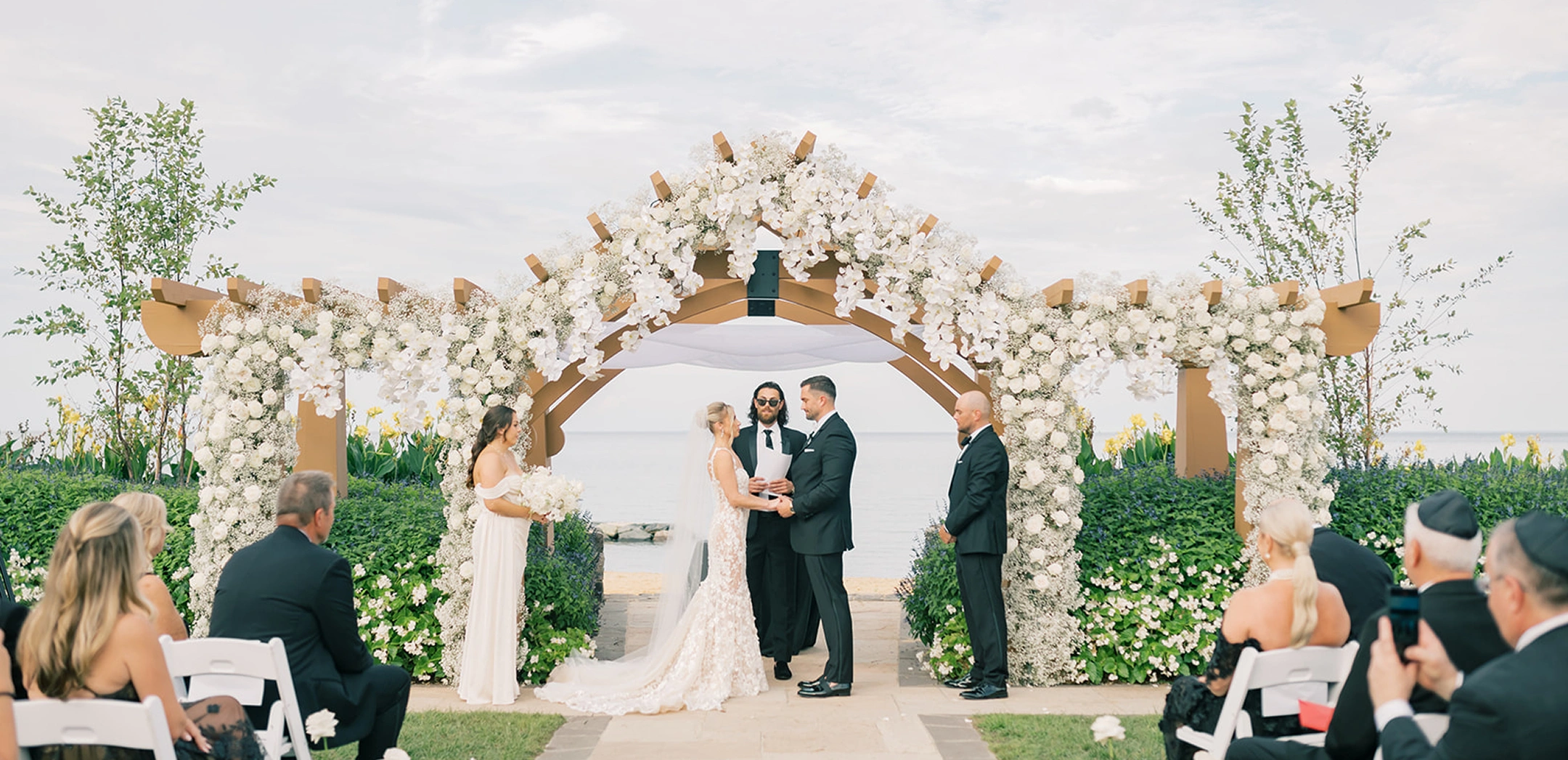Victoria, how would you describe your signature style?
I would say that I don’t have a signature style, but if I were to ask other people, I know that they would say it’s lush, creative and detailed. My signature style is kind of getting inside the client’s head and understanding who they are and start thinking the same way they do. I’m one of those people, I get bored doing the same thing over and over again. So I think that’s why I don’t have a signature style. I love doing a variety of things, that’s what keeps me alive as a designer and keeps me learning, keeps me challenging, keeps me growing. I truly thrive on doing things that are different.
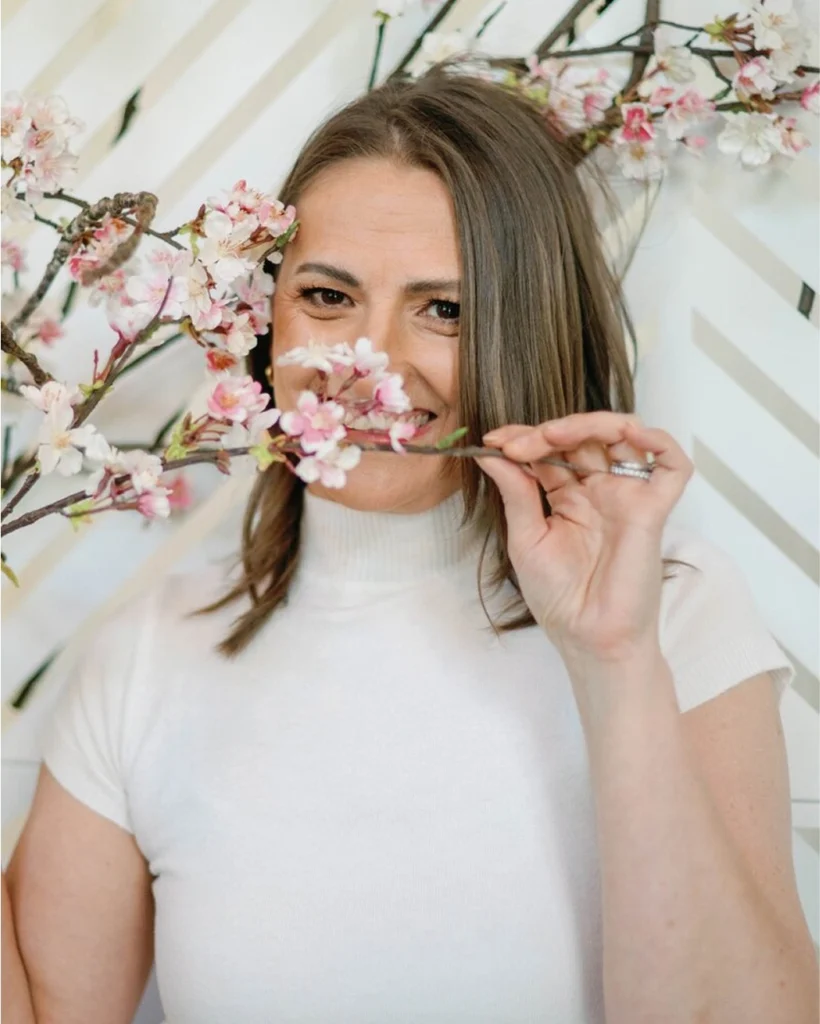
Is that something you want people to take away from your workshops?
I would say the main thing I want people to take away is that everybody is super unique and everybody is very talented in their own way. And to me, the goal is always to help people to find themselves. I want them to be inspired and challenged to look deeper into their heart and soul and become a better designer naturally. If it’s the style that they’re looking for, hold on to that. If it’s a challenge they’re looking for, to become more confident and secure in what they are, what they’re doing and who they are. I truly believe that flowers are art and copying is never producing a true masterpiece, you know? And also, learning something that may not be your natural style will make you a better designer. Even if you’re never going to do it again.
“My goal is truly to understand the client, so when people walk in the room they totally see the clients through everything we’ve done.”
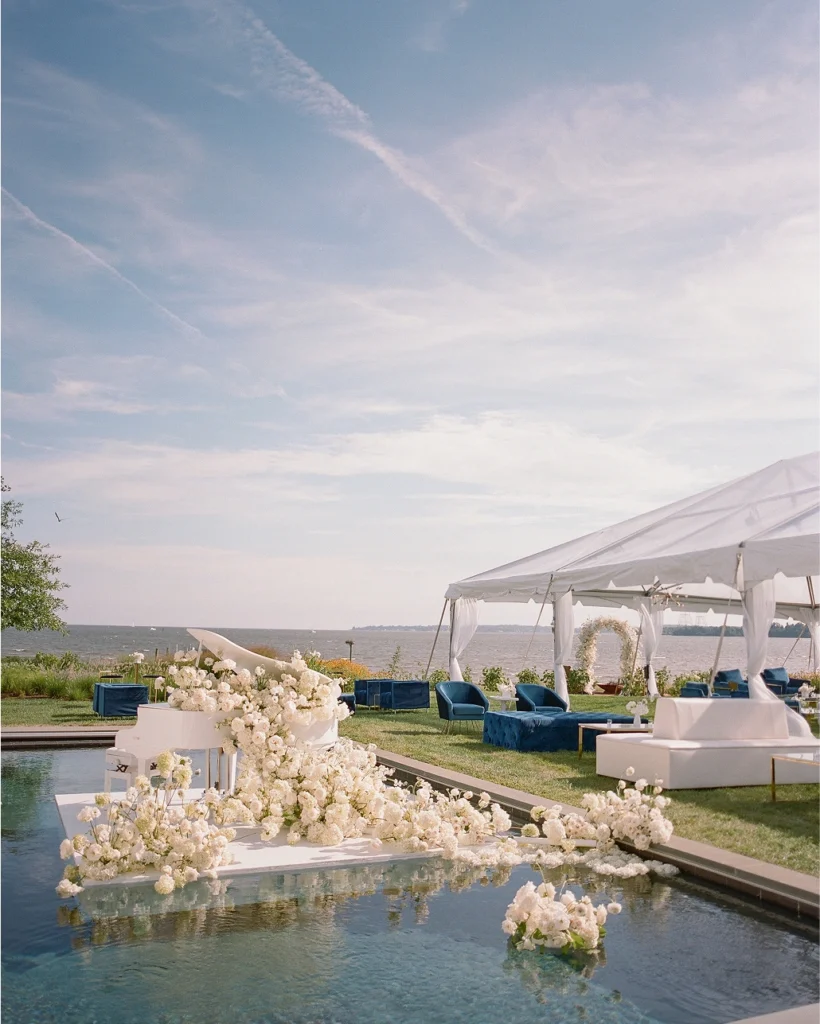
Is that your favorite thing about teaching then? The passionate and experimental side of it?
I would say my favorite thing about teaching is really that moment where people just, you know, you can see the sparkle in their eye and you know, oh my gosh, I can do it. I never thought I had that in me. I’m seeing people with the same set of flowers, the same ingredients and you walk through the room and you can see completely different designs. I would say that’s my favorite side of teaching. I learn as much as I teach. That to me is the biggest gift of teaching.
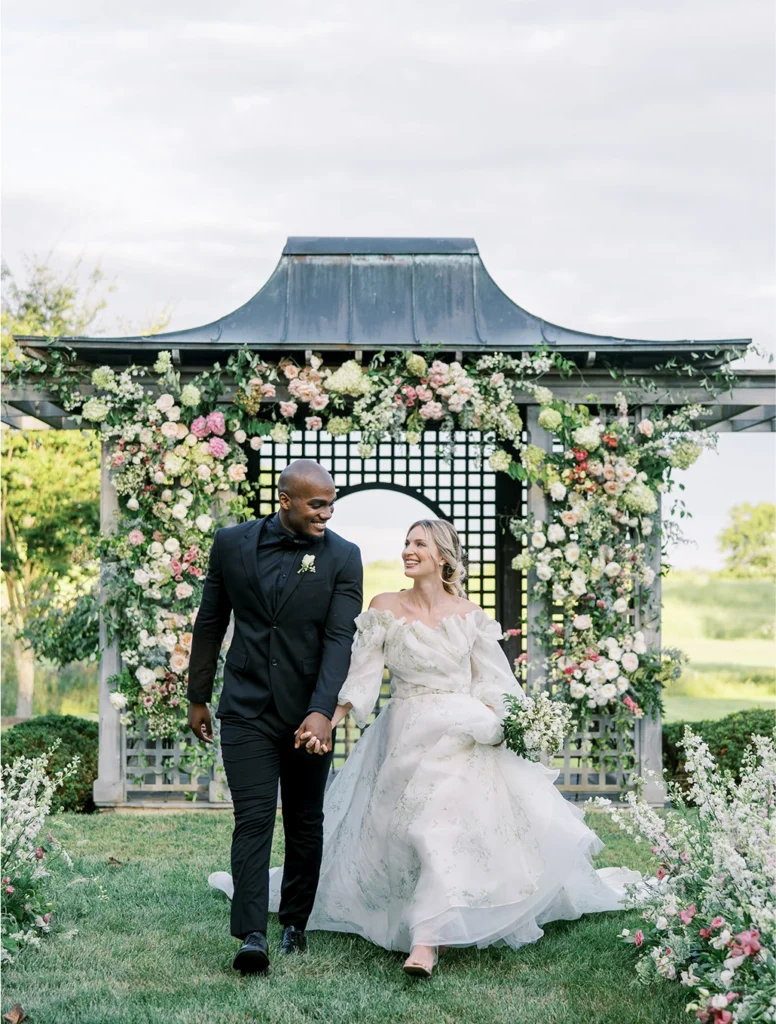
What’s the biggest learning curve you’ve experienced?
I feel like I’m much more confident. Sometimes you really need to look at the big picture when you are designing because there is a plan and then there is reality. For instance, we had a wedding a few weeks back. It was a beautiful design on the water, but the wind was so ridiculous, we could not do like 25% of the designs. The whole plan had to change. We had to think, what is the experience that we promised the client? How can we create it even though the wind is taking everything from under us? In the beginning of my career, I might have been in tears. But now, I really feel that no matter what’s thrown at us, the client is happy and nobody knows that we’re actually on plan Z. So I would say that the biggest thing has been learning to adjust, adapt, change on the spot and figure it out.
That comes from lots of experience, doesn’t it?
It comes from practice. Correct. So like I always say to the team right now, freak out later, you know, we can cry and laugh and whatever, right now, we’re just making it happen. And also, as a person, I feel like I have a thicker skin. I feel like I read people much better than before. And because of that, I feel like I’m a much better person.
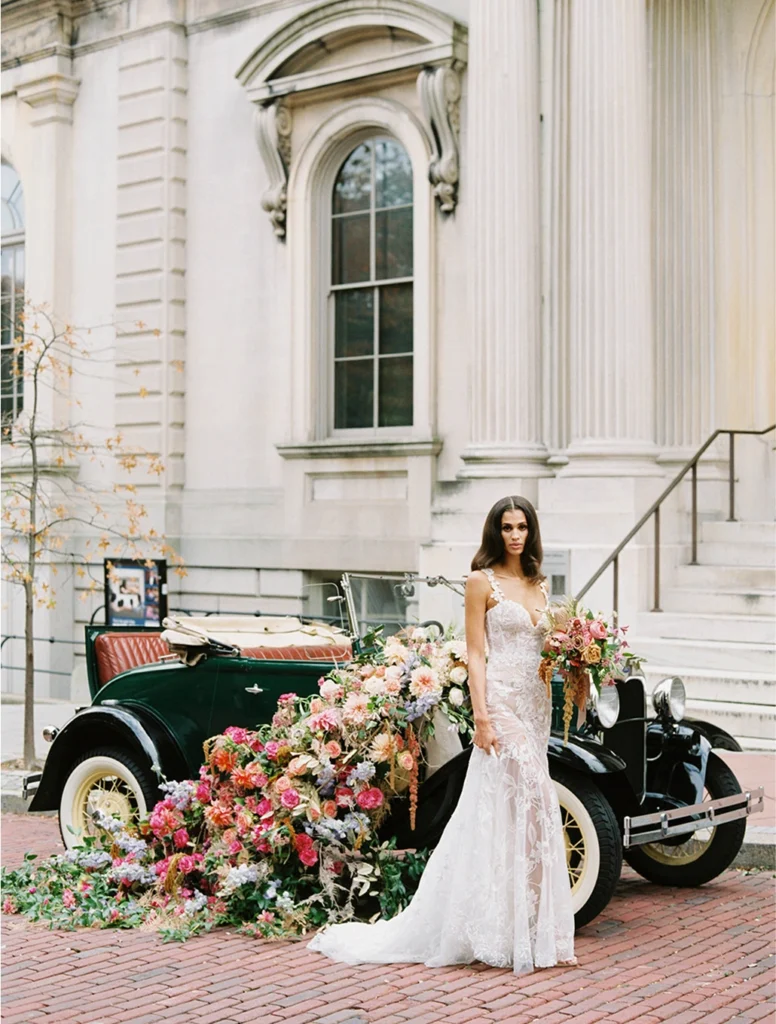
Is there a job or a project that brings you the most joy to reflect on?
Oh, that’s a really, really hard question. The first job that comes to mind is this big wedding we did recently, because it was extremely challenging logistically, first of all, because the property was really big. I’m very proud that despite everything that was thrown at us, we produced a beautiful wedding. And when you look at the photos, nobody knows. Like right before the bride and groom came, the whole champagne tower flew on the floor and broke into pieces. People were coming in off the buses, and we were picking up the pieces, and the champagne tower was then really small, but they didn’t notice. The end goal was not to have the most beautiful champagne tower, if it’s 12 glasses instead of 57, so be it.
Where do you find your inspiration?
It comes in so many different shapes and sizes. Sometimes it’s the venue. Sometimes it’s a photo. It can be completely random. It could be just a color, or a piece of linen, a really beautiful piece of fabric, and you start dissecting it in terms of movement and color and texture. It’s not just about flowers. It’s kind of looking at the big picture and saying, do these elements work together?
How do you find the balance between being honest and bringing their dreams to life?
I’ll be honest, sometimes I lose clients because I tell them something they don’t want to hear. But I’d rather lose the client and be honest with them and have them go home and think about it, than disappoint them. Because if they come in and their vision is too big for their budget, I tell them. I’ve also had people who have a vision that doesn’t fit their venue. Let’s say they want something hanging dramatically and their venue only has an 11 foot ceiling, so I can’t do anything dramatic. I don’t tell them no, I don’t drop the bomb without giving them a solution. And then we decide to go in an alternative direction. I just feel like it establishes trust from the start. Everybody wins. And I hope it also shows that it’s not about me, it’s about them.
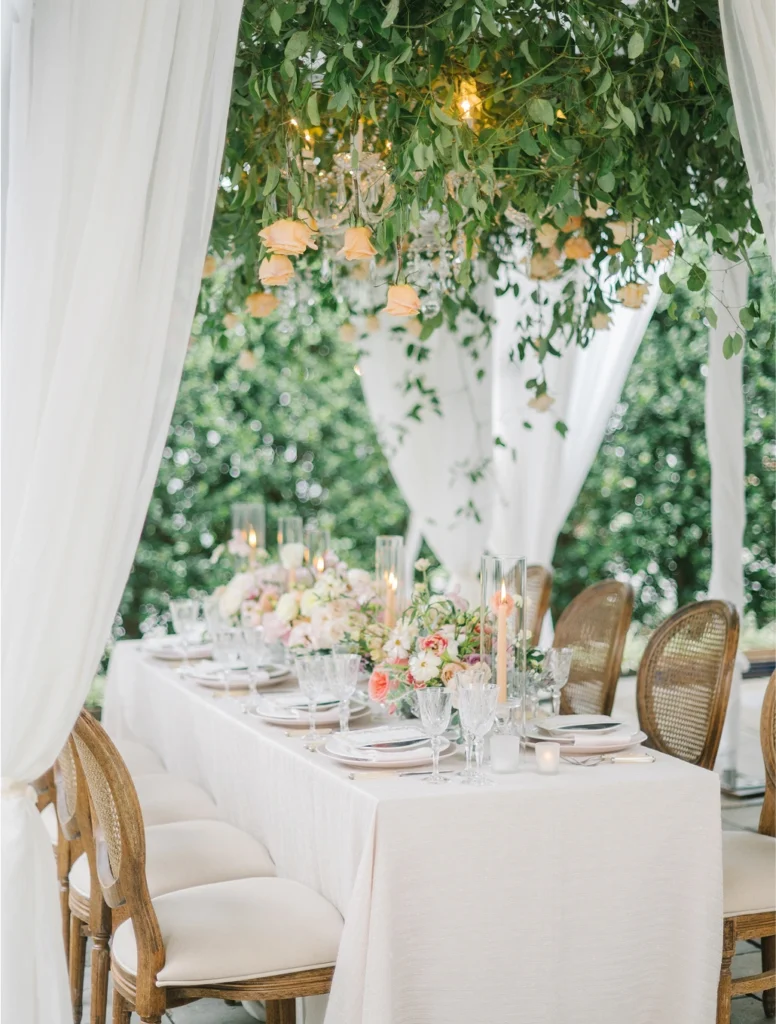
A big part of Madrid Blooms is that we’re really trying to push sustainability. How do you incorporate sustainability into your daily practices?
I will be completely honest. This is our weakest link. Just because in America, when you do so much commercial work, infrastructure is not set up. Just even recycling. We’re working on finding our own recycling for flower stems and botanical products. To make it truly sustainable here we have to start small, separating everything in the studio. I have a program for kids too, and we’ve been giving them our old flowers from events and they’ve been doing a lot of arts and crafts and then they compost it, things like that makes me very very happy. We’re not just giving flowers a second life but we’re also inspiring a new generation. I’ve been talking to the guys from Blooming Haus, designers from MADRID BLOOMS 2025. That’s been quite an inspiration.
You mentioned the difference between Europe and America there, what kind of influence has growing up in Ukraine had on your style and approach to your work?
From my upbringing … I don’t know if it’s just Ukraine as a nation, but growing up with a father who was just very… My father was an engineer, he would not take a no for an answer. If you say I cannot do something, he’s like, I don’t agree with that. You know, go find the book, read up on it, do some research, you’ll figure it out. And what that created in me is ingenuity, coming up with ideas and alternatives and thinking outside the box, because when you grow up with very little, you have to get creative. You know, there are so many resources, and there is a tool for everything, there is a book for everything. And now being older, I’m grateful to my dad that he pushed me into areas that were not my comfort zone.
OK, Victoria, we’ve come to our very last question, when people see your work, what do you hope that they feel?
Well, when it’s let’s say a wedding or a party, I don’t want people to say, oh, this is Victoria’s work. I really want people to say this is Mary. It’s so Mary and Jo. So my goal is truly to understand the client to the point where people walk in the room and they totally see the clients through everything we’ve done. So their personality, their taste, their style shines through in the most beautiful way possible. And I want them to see us through the intention, details and the quality of work that we produce, but not through the style. That’s pretty much the goal for me, for people to see the clients through what we’re doing. I truly, truly feel like I have a gift, I want to help people tell their story, they are the main character.
